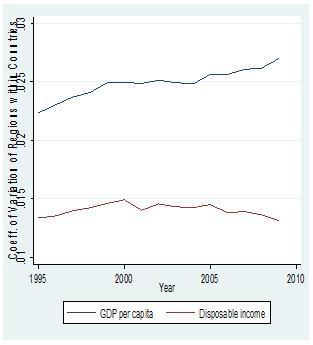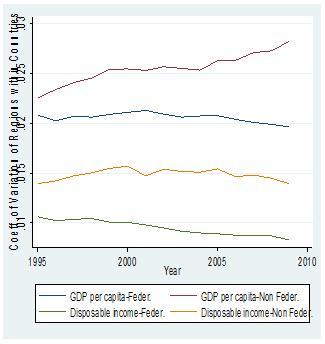Chart of the week: EU Cohesion Policy and the role of national governments
The official mission of EU Cohesion Policy is to reduce “disparities between the levels of development of the various regions and the backwardness of the least favoured regions”. We run standard convergence analysis and find that this rather broad policy objective is only half-met. Countries and regions in Europe have been converging over the last decade but the dispersion in regional GDP per capita in each country is instead on the rise (Chart 1a).
However, if we look at regional disposable income (after benefits and taxes) we do not find the same divergence pattern. This would suggest that governments, which are responsible for determining benefits and taxes, are able to successfully redistribute across regions. Even more interestingly, we do not find that this positive redistribution record is limited to fiscally decentralized States (Graph 1b).
The EU should devote some time to properly reassess the role and remit of EU Cohesion Policy for the next Financial Perspective 2014-2020. Should EU Cohesion Policy really be used to eliminate regional disparities in each country or should it have more of a European remit? Are all intra-country regional disparities bad? Is standard income convergence analysis the right tool to assess whether all European regions have been given the right instruments for growth?
CHART 1: DISPERSION OF REGIONAL GDP AND INCOME PER CAPITA WITHIN COUNTRIES, 2000-2009


Source: own elaboration based on data from EUROSTAT
Note: The dispersion (ie coefficient of variation) of regional per capita GDP (and disposable income) is the average country-level dispersion across 26 EU countries (excluding Luxembourg) in each year.